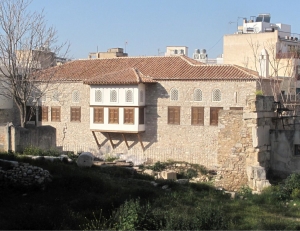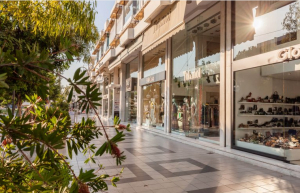Glyfada’s main retail artery of Metaxa Street runs from Agiou Konstantinou cathedral, opposite the Glyfada Nautical Club. It’s a long, open-air shopping mall of international and Greek fashion chains and shoe shops, serviced by frequent tram stops and fast food outlets. In the 1990s, a United States air base cleared out of this southern seaside hub, leaving behind an American echo in Metaxa’s retro marble shopping arcades and in the country’s first 18-hole pro-golf course.
Glyfada’s prettier, greener, and more interesting side streets present a cosmopolitan village vibe and an ever-changing carousel of new tastes and brands to be road-tested on a mostly affluent audience. The suburb’s character is also nuanced by the many working families who’ve lived here for generations when Glyfada was still an unassuming coastal town (long before the tram line connected it to Syntagma Square and Piraeus in time for the 2004 Olympics).
Here's what to experience in this coastal suburb in Athen's south:
Kyprou - The street that’s a neighborhood
The extended thoroughfare of Kyprou, running parallel to Metaxa and neatly dissected by sociable Esperidon Square, possesses upbeat, self-contained energy and glamour that’s Glyfada distilled. Observe the trendy trattorias, edgy boutiques, beauty bars, buzzy French delis, and concept stores. It’s also where you’re most likely to find beautiful Athenians dressed in black, staking out stylish drinking dens like Pere Ubu, 57, Su Casa, and Oh Mama. Kyprou is ground zero for serious shoppers not interested in Metaxa’s high-street trinkets: the street is colonized by high-end boutiques like Pinko, Zadig & Voltaire, and Mirina Tsantili, championing Greek designers beside international labels.
The Glyfada Coast
A string of perfectly serviceable public beaches, some with free umbrellas, line the Glyfada seafront. Punctuated by several marinas and cafes, they’re easily reached from downtown Athens by tram or bus (the third beach generally has the better sand and cleaner water). Many locals are happy enough to cool off here, but the peacocks head for the considerably more fashionable and photogenic Asteras Beach Resort about a kilometer further south. Asteras is a long privately-developed stretch of sandy coast divided into separate leisure hubs with valet parking and all-day offerings, including Balux Pool Seaside (with an adults-only seafront pool and beach bar), and chic café-restaurant Ark.
Family Fun
A popular nocturnal playground for grown-ups, Glyfada knows how to turn on the fun for families too. Hygge House café in the Glyfada Centre arcade channels the Danish “happiness theory” for children of up to 10 years in a light-flooded annex with free creative play areas, arts and crafts workshops, and summer holiday seminars in English. Blanos Bowling keeps boredom at bay with a dozen or so lanes, a soft-play enclosure, a café, and a small skating rink. For outdoor play, the revamped adventure park in central Platia Chariton has zip-lines, climbing pyramids, scooter ramps, and plenty of green space and picnic tables. Balux House Project is a cavernous leisure spot on the glitzy Asteras seafront strip with computer bays and bean bags for idle teens, plus indoor and outdoor play areas for kids of all ages. For a family outing with a purpose, the Archelon Sea Turtle Rescue Centre, allows children to visit injured turtles being nursed back to health.
To read this article in full, please visit: thisisathens.org
Photo Credit: Manos Chatzikonstantis











